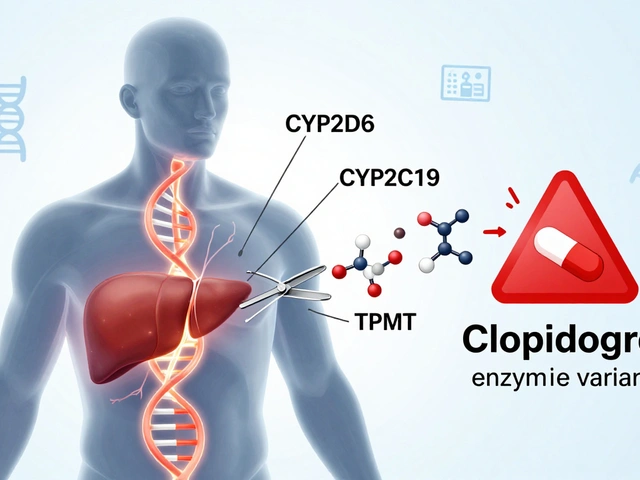If you’ve spent years slathering on steroid creams for eczema or other stubborn rashes, you probably know the drill: quick fix, then merry-go-round flares, thinning skin, and that constant question—‘Is there any other way?’ Turns out, yes, there is. And no, you’re not obliged to settle for thinning skin or the dreaded rebound. The skin care world’s been busy cooking up smarter, safer routes to calm that angry, itchy mess—without steroids. Welcome to the world of calcineurin inhibitors and PDE4 blockers, the unsung workhorses for folks who want relief without the side effects baggage.
Why Look Beyond Topical Steroids?
Everyone’s seen those thick tubes of hydrocortisone or betamethasone lurking in the medicine cabinet. Dermatologists hand them out like candy because, well, they work. Fast. But if you’ve ever Googled ‘topical steroid withdrawal’ at 2am, you know there’s a catch. With frequent or long-term use, steroid creams can thin the skin, make capillaries more visible, and even mess with hormones if overused. Kids and people with sensitive facial skin have an even shorter leash for steroid safety. It’s anxiety-inducing when you realize relief comes with strings attached.
Here’s the wild part: eczema and contact dermatitis aren’t just random itches; they’re your immune system throwing a fit. Steroids mute the commotion, but they don’t exactly address why your immune troops are so trigger-happy. Also, there’s the rebound effect—a steroid pause can make redness and burning come back even angrier. It’s no shock that more and more people (especially parents) are wary about making steroids a life-long ‘solution’ for their families.
For some, the answer is finding a non-prescription alternative to Prednisone, or any of the potent steroids that doctors lean on. Options exist, and it’s a mistake to think steroids are the end of the road. Modern medicine’s toolbox has quietly expanded to include clever molecules that talk sense into the immune system—without the mess steroids leave behind. Let’s break down the ones you’ll want to know: calcineurin inhibitors and PDE4 blockers.
Calcineurin Inhibitors: Smoothing Rashes Without Thinning Skin
Ever heard of tacrolimus or pimecrolimus? These are the stars in the calcineurin inhibitor team. Unlike steroids, which smother all immune activity, these creams target specific immune signals right in the skin. Imagine telling your immune system, ‘Hey, calm down out here—leave the rest of me alone.’ Calcineurin inhibitors work by stopping T-cell activation, so those inflammatory messages slow to a trickle.
People use these creams for atopic dermatitis, especially on delicate areas. Eyelids, genitals, face—places where steroids either don’t belong or start wreaking havoc fast. Plus, there’s no risk of thinning the skin, which makes them a long-term friend rather than a guilty secret.
Here’s what real-life use usually looks like:
- Apply a pea-size amount to affected skin, usually twice a day in the beginning.
- Sensitivity or a mild burning feeling might happen in the first few days, especially if the skin’s raw, but this usually fades pretty quickly.
- These creams play nicely with moisturizers—just wait ten minutes before layering.
- Sun safety is big; these meds can make skin a bit more sensitive to sunshine, so sunscreen’s your new best friend.
Clinical studies keep piling up the positives: zero skin thinning even after months or years of use. Kids, adults, and chronically itchy people can chill out without living in fear of the side effects spiral. Even better, research shows that using tacrolimus proactively—twice a week, not daily—can keep flare-ups on a tight leash for months at a time.
But nothing’s perfect. The main downside? A burning or stinging sensation right after applying, especially at the start. There’s also a black box warning about theoretical cancer risk, but decades of use haven’t shown a spike in skin cancer rates. Most dermatologists agree these creams are safer than chronic steroids, especially for the face and folds. Still, don’t use them on infected or broken skin, and always follow your doctor’s directions.

PDE4 Blockers: A Next-Gen Option for Eczema Sufferers
Newer on the scene but picking up speed—PDE4 inhibitors like crisaborole (sold as Eucrisa) flip the eczema script in a different way. Here’s what makes them clever: they block phosphodiesterase 4, an enzyme that lets inflammation run wild. By cutting off this pathway, PDE4 blockers calm the fire right at the source, no steroids needed.
So who should care? Anyone sick of greasy creams, weird smells, and steroid rot should pay attention. Crisaborole goes on as a thin ointment, so it’s great for patches that are visible or in awkward spots. The best part? No skin thinning, no bleaching, no stretch marks. Even kids as young as three months can use it. It’s also happy to sit in your medicine cabinet for the long haul, because frequent use doesn’t bring those sneaky surprises steroids love to deliver.
Here’s how best to use PDE4 blockers:
- Apply twice a day to eczema or dermatitis patches—clean and gently dry the skin first for best results.
- Stinging can sneak up, especially if skin’s very raw, but it tends to back off after the first weeks.
- Pair with your favorite gentle moisturizer, but rub in the blocker first to let it soak in fully.
- If you get frustrated by slow results, don’t bail—studies show inflammation and itch keep improving over 4 weeks, and by month two, many people see clear relief.
No treatment’s totally a breeze. Crisaborole and other PDE4 creams can sting sensitive skin at first, and they need daily commitment. Mild to moderate eczema is where these shine most, so if the outbreak is fierce, a short steroid ‘rescue’ may be needed before switching over. The upside? You can stay off steroids for the bulk of the time, keeping flares manageable without risking skin thinning or those ugly steroid spots.
If you’re wary of prescription costs or looking for a non-prescription alternative to Prednisone to round out your toolkit, there are options, especially for milder cases or between doctor visits. Just be sharp with your research and skip the snake oil—look for evidence-backed products and pay attention to ingredient lists.
Smart Tips for Switching and Combining Therapies
Okay, you’re sold—no more relying on steroid creams forever. What now? First tip: let your doctor (or dermatologist) in on the plan before making big jumps. Transitioning doesn’t mean tossing the old tube immediately; sometimes it’s about layering or slowly swapping over.
Here are my best tips and tricks for getting the most out of these steroid-sparing heavyweights:
- Make moisturizers your foundation—use the thick, bland kind after every bath or shower. Healing loves hydrated skin.
- Start with short ‘bursts’ of steroid cream to tamp down severe flares, then use calcineurin inhibitors or PDE4 blockers for maintenance. This approach, called “step-down therapy,” works wonders for tons of people.
- If stinging-burning from new creams is a dealbreaker, try applying moisturizer first, then your medicated cream. It can buffer the ouch without killing the effect.
- Be religious about sun protection, especially if your new regimen includes calcineurin inhibitors. Think shade, hats, and mineral sunscreen.
- Document your symptoms in a diary or app. Notice when flares hit—after stress, new foods, pollen? This makes it easier to tweak your plan and spot triggers you’d never expect.
- Keep an open line with your doctor. If something seems off (infection, spreading rash, weird bump), speak up fast. These medications are safe but not magic forcefields.
- Share what works in support groups or forums. One parent’s tip about bedtime moisturizer or a certain brand of cotton gloves could seriously change your life.
The great thing about calcineurin inhibitors and PDE4 blockers is you’re not locking yourself into a single approach. Some folks rotate between both, some mix with natural remedies, and some even pair with future therapies like biologics for severe cases. Science keeps churning out smarter options, so staying informed isn’t just a hobby—it’s a lifeline for people battling chronic skin stuff day in and day out.
If nothing else, remember this: you deserve comfortable, flexible skin care that doesn’t demand a pile of trade-offs. Whether you’re switching for yourself, your partner, or your kid, it’s never been easier to ask for more: more relief, less risk, better skin in the mirror, and a treatment plan you can actually live with. Steroid creams don’t get to write your entire story—not anymore. So don’t settle. Try what’s new. Your skin will thank you.







15 Comments
Tiffany Davis
Calcineurin inhibitors are a solid option for people who need long‑term control without the skin‑thinning risks of steroids. I’ve found that applying a pea‑sized amount twice daily, then tapering to twice a week, keeps flare‑ups at bay. Pairing them with a good moisturizer and sunscreen really maximizes the benefit.
Don Goodman-Wilson
Oh great, another “miracle” cream that burns like a firecracker at first – just what we needed.
Bret Toadabush
Did ya know the pharma giants push steroids so they can keep us hooked on their cash flow? They don’t want you using calcineurin stuff ’cause it cuts into their profit machine. Wake up, man.
Diane Thurman
If you’re still reaching for high‑potency steroids on your face, you’re ignoring basic dermatology guidelines and risking permanent damage.
Iris Joy
The shift toward steroid‑sparing agents reflects a deeper understanding of eczema’s immune basis. Calcineurin inhibitors such as tacrolimus directly inhibit T‑cell activation, which is a core driver of the inflammatory cascade. Because they act locally, they spare the epidermal matrix from the catabolic effects seen with chronic corticosteroids. Clinical trials have consistently shown no measurable skin‑thinning even after years of continuous use. Moreover, patients report a smoother skin texture and fewer telangiectasias when they transition off steroids. The initial burning sensation that many users experience usually fades within a week as the skin barrier adapts. For sensitive areas like the eyelids and genital folds, this tolerability profile is especially valuable. Adding a broad‑spectrum moisturizer after the drug has absorbed helps seal in hydration and reduce the perceived sting. Sun protection becomes indispensable because calcineurin inhibitors can sensitize the skin to UV exposure. In practice, many dermatologists recommend a prophylactic schedule of twice‑weekly applications to maintain remission. This maintenance strategy has been linked to a 30‑40 % reduction in flare frequency in real‑world cohorts. PDE4 blockers complement this approach by targeting a different intracellular pathway, namely cyclic‑AMP degradation. By preserving cAMP levels, PDE4 inhibitors blunt cytokine release and lessen itch intensity. Crisaborole, the most common topical PDE4 inhibitor, is approved for patients as young as three months, expanding its utility to pediatric populations. Although the onset of relief can be slower than steroids, persistence over several weeks yields noticeable improvement in skin barrier function. Ultimately, integrating these agents into a step‑down regimen empowers patients to achieve durable control while minimizing long‑term adverse effects.
Sarah Riley
Calcineurin inhibitors modulate NFAT signaling without compromising epidermal integrity.
Tammy Sinz
When evaluating the pharmacodynamics of topical PDE4 blockade, it’s essential to consider the downstream suppression of IL‑4 and IL‑13 transcription. The molecule’s lipophilic base allows adequate penetration even in hyperkeratotic plaques, which is often a limitation for conventional steroids. Clinical data indicate a steady decline in pruritus scores after the third week of consistent use. For patients with chronic atopic dermatitis, integrating PDE4 inhibitors as a maintenance therapy can reduce the cumulative steroid burden dramatically.
Christa Wilson
Love seeing more options that keep our skin happy 😊! These creams feel lighter than the old steroid tubes and don’t leave those scary white patches. Keep sharing your success stories! 🌟
John Connolly
Incorporating calcineurin inhibitors into a comprehensive eczema management plan offers several advantages. First, the targeted inhibition of T‑cell activation reduces inflammatory mediators without systemic exposure. Second, the absence of cutaneous atrophy permits long‑term use on sensitive areas such as the face and intertriginous zones. Third, when combined with regular emollient therapy and appropriate photoprotection, overall disease control improves substantially. Patients are encouraged to discuss any transient burning sensations with their dermatologist to adjust the application frequency.
Sajeev Menon
Hey folks, just wanted to chime in – I’ve tried both tacrolimus and crisaborole on my son and saw a noticeable drop in red patches after a couple of weeks. It’s key to keep the skin clean and dry before you slather the cream, otherwise the product can slide off. Also, don’t forget to re‑apply sunscreen each morning, even if you’re staying indoors most of the day. Hope that helps!
Emma Parker
Girl, I totally get the frustration of that first sting – it’s like a tiny electric shock! Trust me, after a few days it’s gone and you’ll be glad you stuck with it.
Joe Waldron
When transitioning from topical steroids, it’s advisable to taper gradually, monitor skin response, and maintain a consistent moisturizing routine, otherwise you risk rebound inflammation. Applying the calcineurin inhibitor after the skin has dried for at least ten minutes helps maximize absorption, and using a mineral sunscreen can prevent photosensitivity, which is often overlooked. If any signs of infection appear, such as increased redness or purulent discharge, consult your dermatologist promptly.
Wade Grindle
The recent trend toward non‑steroidal topical agents reflects both patient demand and emerging clinical evidence. By targeting intracellular pathways rather than global immunosuppression, these medications achieve comparable efficacy with fewer adverse events.
Benedict Posadas
Yo, these new creams are legit 🔥! I started using tacrolimus on my elbows and the itch went down in just a few days – no more sleepless nights. Don’t forget to use a good moisturizer after, it makes the whole thing feel smoother 😊.
Jai Reed
Patients must understand that reliance on high‑potency steroids is a short‑term fix that jeopardizes skin health. Adopt steroid‑sparing therapies immediately to protect the epidermis and achieve lasting remission.